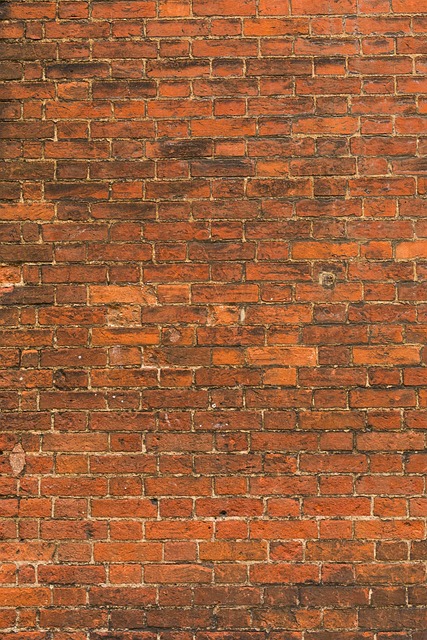Grout lines, while aesthetically pleasing for ceramic or stone surfaces, are prone to hygiene issues due to their ability to trap dirt and stains. Regular cleaning and sealing are crucial for maintaining grout integrity, with different types requiring specific methods. Prompt stain removal using tools like a grout saw and natural cleaners prevents long-term damage from moisture, harsh chemicals, and environmental factors. A multi-step protection strategy includes regular cleaning, sealing after installation or cleaning, non-slip mats in prone areas, and quick spill cleanup to keep grout lines stain-free and aesthetically appealing.
Grout lines, the intricate network that defines our tile work, can quickly transform from stunning to stained. This comprehensive guide delves into the world of grout line protection and cleaning, addressing the causes of common stains and offering effective solutions for their removal. Learn proven methods, essential tools, and preventative measures to maintain a fresh, healthy appearance in your grout lines. Discover expert tips tailored to keeping your spaces not just clean, but stain-free.
Understanding Grout Lines and Their Vulnerability to Stains

Grout lines, those narrow joints between tiles, are an essential component in maintaining a clean and aesthetically pleasing ceramic or stone surface. However, they also present unique challenges when it comes to hygiene. Due to their intricate nature, grout lines can trap dirt, debris, and most notably, stains. This vulnerability arises from the porous material that makes up grout, allowing liquids like coffee, tea, wine, and even water-based stains to penetrate and adhere to its surface. Over time, these stains can become ingrained, making them difficult to remove without proper care.
Regular cleaning and protection are crucial in preserving the integrity of grout lines. Effectively removing stains requires a deep understanding of the various cleaning methods suitable for different types of grout. From natural stone grouts, which might be more sensitive, to sanded or unsanded options, each has its specific cleaning needs. Adopting preventive measures such as sealing the grout after installation can also significantly reduce staining, making routine maintenance easier and ensuring a longer-lasting, stain-free surface.
Causes of Stains in Grout Lines: A Comprehensive Overview

Grout lines, often overlooked, can become victims of various stains and discolourations over time. Understanding the common causes is the first step in effective protection and cleaning. One primary reason for stains is moisture intrusion. Grout, being porous, absorbs water easily, which can lead to the growth of mould, mildew, and algae. These microorganisms produce pigment-producing enzymes that result in unsightly discolouration. Another significant factor is the seepage of substances like oil, grease, or even food particles into the grout lines. Everyday spills and leaks from fixtures can leave behind residues that, over time, penetrate the grout’s surface, causing staining.
Moreover, harsh cleaning products and acidic substances can also damage the grout, making it more susceptible to stains. The chemicals in these products can dissolve the grout’s protective layer, revealing a porous surface prone to discolouration. External factors such as environmental pollutants and sunlight exposure contribute to the degradation of grout, especially in outdoor spaces. Once stains appear, they can be challenging to remove, hence the need for regular maintenance and prompt cleaning to prevent long-term damage and ensure the aesthetics of your grout lines remain intact.
Effective Methods for Removing Common Stains from Grout

Removing stains from grout lines is a common maintenance task for any homeowner. The first step in effective grout cleaning is identifying the type of stain. Everyday stains like soap scum, hard water deposits, and dust can be tackled with a combination of baking soda and vinegar. Create a paste by mixing baking soda with a small amount of water or vinegar, apply it to the stained area, let it sit for 15-20 minutes, then scrub gently with an old toothbrush or grout brush. For tougher stains like mold or mildew, a bleaching agent like chlorine bleach can be effective. Always test the solution in an inconspicuous area first to ensure it won’t damage or discolour the grout.
For more persistent stains, consider using commercial grout cleaners that contain powerful enzymes or acids designed to break down organic matter and mineral deposits. These products typically require soaking the grout for a longer period before scrubbing. After cleaning, rinse thoroughly with warm water and dry completely to prevent new stains from forming. Regular cleaning and protection with sealing agents can significantly extend the life of your grout lines between deep cleans.
Essential Tools and Materials for Grout Line Cleaning

When it comes to cleaning grout lines, having the right tools and materials is essential for achieving optimal results. Start with a good quality grout saw or utility knife designed for cutting and shaping grout. These tools allow you to carefully scrape away dirt, mold, and other debris lodged within the narrow gaps. Additionally, a wire brush or stiff-bristled scrub brush will help agitate and loosen stubborn stains from the grout’s surface.
Don’t forget the importance of protective gear, such as gloves and safety goggles, to shield yourself from sharp edges and chemical cleaners. For removing stains from grout lines, consider using natural cleaning agents like baking soda or vinegar mixed with water. These ingredients are effective yet gentle on the grout material. Always test any cleaner in a small, inconspicuous area first to ensure it won’t cause discoloration or damage.
Preventive Measures: Protecting Your Grout Lines from Future Stains

Protecting your grout lines from future stains is a proactive approach that ensures longevity and aesthetic appeal. Regular cleaning with a mild detergent and a soft brush can prevent dirt and grime buildup, which are primary causes of staining. Additionally, sealing the grout after installation or cleaning creates a protective barrier, making it easier to remove any subsequent stains. Sealing products form a layer over the grout, preventing liquids from penetrating and causing discoloration.
For added protection, consider using non-slip mats in areas prone to water spills or tracking in dirt. This reduces the direct contact of fluids with the grout lines, minimizing the risk of staining. Regular inspection and prompt cleaning of any spilled substances are essential preventive measures. Furthermore, keeping your floors dry after cleaning helps prevent moisture from seeping into the grout, which can lead to mold growth and discoloration over time.
Tips for Maintaining a Clean and Healthy Grout Line Appearance

Keeping your grout lines clean and free from stains is an essential part of maintaining a bathroom or kitchen that looks fresh and inviting. Regular cleaning can prevent dirt, grease, and grime buildup, which not only makes it look unsightly but also creates a breeding ground for bacteria. Start by vacuuming the floor to remove any loose debris, then use a damp mop to wipe down the surfaces. For stubborn stains, employ a grout cleaner or a mixture of baking soda and water, gently scrubbing away at the discolored areas with an old toothbrush.
Remember that preventing stains is easier than removing them, so regularly sealing your grout lines can be beneficial. This creates a protective barrier against moisture, dirt, and other elements that cause discoloration. After cleaning, dry the floors thoroughly to prevent water damage and ensure the grout remains in good condition for longer.
